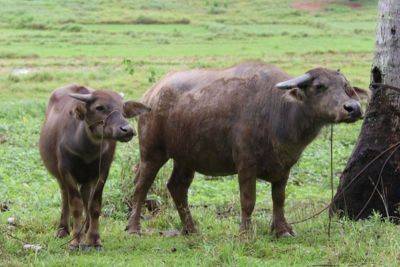Native carabao, riverine buffalo 'distinct species' – Filipino scientists
MANILA, Philippines — Filipino scientists discovered in their recent studies that the two subspecies of domesticated water buffaloes in the Philippines are distinct species.
Traditionally, the country has classified swamp buffalo (Bubalus bubalis carabensis) and riverine buffalo (Bubalus bubalis bubalis) as two subspecies of domesticated buffalo (Bubalus bubalis).
A species is a group of organisms that share common characteristics and genetic structure that can interbreed among themselves. A subspecies is identified when there are organisms of the same species with distinct characteristics or traits, such as having a different color or behavior.
Researchers from the University of the Philippines Diliman - College of Science’s Institute of Biology (UPD-CSC IB) and the Department of Agriculture - Philippines Carabao Center (DA-PCC) determined that the swamp buffalo has a unique DNA sequence of genes compared to riverine buffaloes.
They also found each to have a different number of chromosomes. The swamp buffalo, which is more commonly known as the Philippine native carabao, only has 48 chromosomes, while the riverine buffalo has 50.
As a result, the team of researchers is proposing to rename the swamp buffalo from Bubalu bubalis carabenesis to Bubalus kerabau, since it is distinct from domesticated buffaloes. This is in line with Austrian zoologist Leopold Joseph Fitzinger’s classification of the swamp buffalo in 1860.
“The reclassification of the Bubalus bubalis carabanensis to Bubalus kerabau Fitzinger, 1860 supports earlier assumptions that riverine and swamp buffaloes are distinct,” UP biology professor Ian Kendrich Fontanilla said.
Since species are essential in the conservation of ecosystems, researchers emphasize that consistently examining species in the country will help in determining effective breeding strategies to avoid biodiversity loss.
“Confusions on the classifications of the two buffaloes have implications on the breeding program of these species,” Fontilla added.
Besides the distinct chromosome count, one can distinguish a swamp buffalo from a riverine buffalo based on its physical or morphological characteristics.
According to







